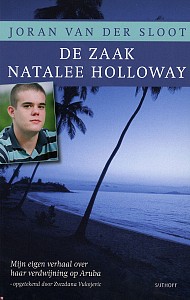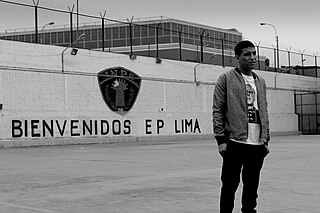Lori Helene Berenson is an American who served a 20-year prison sentence for collaboration with a guerrilla organization in Peru in 1996. Berenson was convicted of collaborating with the Túpac Amaru Revolutionary Movement (MRTA), a group accused of trying to overthrow the Peruvian government by force, considered to be a terrorist organization by the Peruvian government, and on the U.S. State Department's official "terrorist organization" list from 1997–2001. Her arrest and conviction, and the circumstances surrounding her trials, drew considerable attention in both the United States and Peru.

The Wyoming Department of Corrections (WDOC) is a state agency of Wyoming that operates adult correctional facilities. It is headquartered in Suite 100 of the 1934 Wyott Drive building in Cheyenne.

The Mississippi Department of Corrections (MDOC) is a state agency of Mississippi that operates prisons. It has its headquarters in Jackson. As of 2020 Burl Cain is the commissioner.

Joran Andreas Petrus van der Sloot is a Dutch murderer who was convicted in the 2010 killing of Stephany Flores Ramírez in Lima, Peru. He first came to public attention as the prime suspect in the disappearance of Natalee Holloway in 2005.

Peter Rudolf de Vries was a Dutch investigative journalist and crime reporter. His television program Peter R. de Vries, misdaadverslaggever covered high-profile cases and set a Dutch television viewing record. For decades he was famous in the Netherlands for his works in unsolved crimes. He also became internationally renowned for his programme covering the disappearance of Natalee Holloway. In 2005, he founded his own political party which was disbanded soon after.

Natalee Ann Holloway was an 18-year-old American high school graduate from Mountain Brook, Alabama, who disappeared from the Caribbean island of Aruba on May 30, 2005. Her disappearance resulted in an international media sensation, especially in the United States. The prime suspect, Dutch national Joran van der Sloot, has made conflicting statements over the years about his involvement, including a confession to killing her. Holloway's remains have not been found.

Kerobokan Penitentiary Institution is a prison located in Kerobokan, Badung Regency, on the Indonesian island of Bali. Located 4 km away from the Canggu village, the prison opened in 1979 and was built to hold 300 inmates. As of 2017, the Kerobokan Prison contains over 1,400 male and female prisoners of various nationalities. More than 90% of the prisoners are Indonesian and 78% were convicted on drug charges. 15,000 rupiah ($1.08) per day is allocated for each prisoner.
Patrick Paul van der Eem is a Dutch Antillean and convicted drug dealer known for his part in the undercover television report about Joran van der Sloot that was produced by Dutch crime reporter Peter R. de Vries. The program set a Dutch television viewing record and renewed attention in the ongoing investigation of the 2005 disappearance of American student Natalee Holloway in Aruba.

Natalee Holloway is a 2009 American television film directed by Mikael Salomon based on Beth Holloway's book about the 2005 disappearance of her daughter Natalee Holloway. The film stars Amy Gumenick as Natalee Holloway, Tracy Pollan as Beth Holloway-Twitty and Jacques Strydom as Joran van der Sloot. When it aired on the Lifetime Movie Network on April 19, 2009, the film scored the highest television ratings at that time in the network's history.
William Trickett Smith II is a U.S. citizen from Paxtang, Pennsylvania who pleaded guilty to killing his Peruvian wife, Jana Claudia Gómez Menéndez de Smith of Trujillo, Peru. Gómez Menéndez was reported missing and was found in a suitcase that washed up on a beach near the capital city of Lima the day after the 2007 Peru earthquake. Her body was identified by a tattoo of a butterfly on her neck. The homicide investigation became known in Peru as "The Mystery of the Butterfly".

Jaap Amesz is a Dutch television personality. He gained fame as the first winner in 2008, of the Dutch reality television series The Golden Cage, the successor to Big Brother, where he became known as Terror Jaap. In a final competition of the series presented by Bridget Maasland and Rutger Castricum, he won the amount of €1.35 million euros.

Loving Natalee: A Mother's Testament of Hope and Faith is an autobiography written by Beth Holloway about her missing daughter Natalee Holloway, with portions contributed by Sunny Tillman. It was first published in October 2007 by HarperOne, an imprint of HarperCollins, and has also been marketed under its alternate subtitle The True Story of the Aruba Kidnapping and Its Aftermath.
Elizabeth Ann Holloway is an American speech pathologist and motivational speaker. She became widely known in the international media after the disappearance of her teenage daughter Natalee during her high school graduation trip to Aruba in 2005. Subsequently, Holloway became a speaker on the topic of personal safety. She founded the International Safe Travels Foundation—to educate the public to help them travel more safely— and the Natalee Holloway Resource Center to aid families of missing persons.

Aruba: The Tragic Untold Story of Natalee Holloway and Corruption in Paradise is an autobiographical true crime book by Dave Holloway about his experiences searching for his missing daughter Natalee Holloway, co-written with R. Stephanie Good and Larry Garrison. It was released on April 11, 2006, by the Thomas Nelson publishing company.

De zaak Natalee Holloway: mijn eigen verhaal over haar verdwijning op Aruba is an autobiographical non-fiction book written by Joran van der Sloot with Zvezdana Vukojevic. It was released in 2007 in the Dutch language by Amsterdam-based publisher Sijthoff. An English version was not published.
Prison overcrowding in the United States is a social phenomenon occurring when the demand for space in a U.S. prison exceeds the capacity for prisoners. The issues associated with prison overcrowding are not new, and have been brewing for many years. During the United States' War on Drugs, the states were left responsible for solving the prison overcrowding issue with a limited amount of money. Moreover, federal prison populations may increase if states adhere to federal policies, such as mandatory minimum sentences. On the other hand, the Justice Department provides billions of dollars a year for state and local law enforcement to ensure they follow the policies set forth by the federal government concerning U.S. prisons. Prison overcrowding has affected some states more than others, but overall, the risks of overcrowding are substantial and there are solutions to this problem.

The United States Penitentiary, Victorville is a high-security United States federal prison for male inmates in California. It is part of the Federal Correctional Complex, Victorville and is operated by the Federal Bureau of Prisons, a division of the United States Department of Justice.
On August 23, 2013, a prison riot broke out at Palmasola, a maximum-security prison in Santa Cruz, Bolivia. The riot started when members of one cell block attacked a rival gang in another, using propane tanks as flame throwers. Thirty-one people were killed, including an 18-month-old child who was living at the prison. Thirty-seven others were seriously injured. The riot led to calls for reform in the Bolivian prison system, which is plagued by overcrowding and long delays in the trial system.

Peter R. de Vries: Crime Reporter was a Dutch investigative television program covering high-profile criminal cases. Created and presented by Peter R. de Vries the program ran from 1995 until 2012.

San Jorge Prison was a male-only prison located in the fifteenth block of Nicolás de Piérola Avenue, in Lima, Peru. Surrounded by Andahuaylas, Montevideo, Ayacucho and Pasaje Artesanos streets, it was located in the heart of the city.













